Hummingbirds can only be found in North and South America, with the majority of the 330 species living close to the tropical equatorial belt. However, approximately two dozen types of these fascinating birds can be found in the U.S. and as far north as Canada.
One state that enjoys abundant hummingbird activity is Texas. A few species make the state home year-round, while the majority of sightings are made during migration– from March to May during the nesting season and August-September as hummingbirds return to their winter homes.
Common Types of Hummingbirds in Texas
Here is a list of Texas Hummingbirds you can find throughout the year:
- Broad-tailed Hummingbird
- Ruby-throated Hummingbird
- Calliope Hummingbird
- Blue-throated Mountain-gem
- Buff-bellied Hummingbird
- Rufous Hummingbird
- Allen’s Hummingbird
- Black-chinned Hummingbird
- Lucifer Hummingbird
- Broad-billed Hummingbird
- Anna’s Hummingbird
- Green-breasted Mango
- Violet-crowned Hummingbird
- Magnificent Hummingbird
Broad-tailed Hummingbird
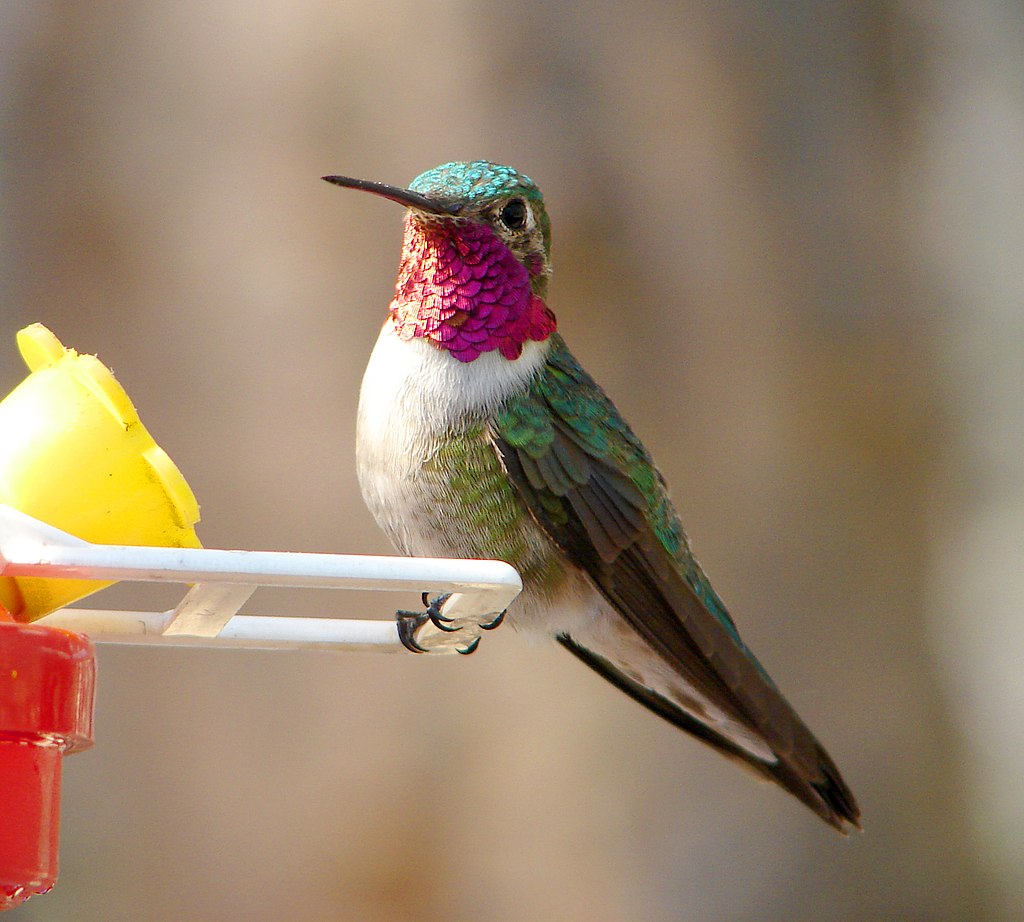
Description
The male Broad-tailed Hummingbird has a red throat, white chest, and a turquoise-green head and body. Adult females have a white throat and body with dark tail feathers and white tips. They grow to an average length of 4”.
Details
Broad-tailed Hummingbirds migrate north in the spring. In the fall they start their south-bound migration back to their winter range in Mexico and Central America. Broad-tailed hummingbirds make a distinct whistling sound with their rapid wing beats.
A female Broad-tailed hummingbird was banded in Colorado in 1976 and was recaptured in 1987, at an age of over 12 years old!
Ruby-throated Hummingbird

Description
The adult male Ruby-throated Hummingbird has just that, a bright, ruby-colored throat with a black head and forked tail. The female body is slender with a white throat is white and blunt, rounded tail feathers. The average Ruby-throat grows to 3 3/4″ and has a lifespan of 3 – 5 years.
Details
Perhaps the most recognizable of all hummingbirds, the Ruby-throat commonly nests in Texas while some migrate as far north as the Eastern U.S. and Canada. Some Ruby-throated hummingbirds will migrate south of Mexico, but many are content to spend the winters in Texas and Florida.
During the spring and fall migrations, Ruby-throated hummingbirds can fly across the Gulf of Mexico– over 500 miles!
Calliope Hummingbird

Description
The Calliope Hummingbird is the smallest bird found north of Mexico with an average length of 3 ¼”. Males have a magenta-streaked throat and white body. Females are mostly gray and white. The Calliope has a very short bill and tail.
Details
Calliope hummingbirds prefer to breed in meadows, forests, and at high elevations in the mountains of the northwestern United States and Canada. They can be spotted in western Texas during migration. The Calliope can travel as much as 5,000 miles to reach its preferred nesting range and return trip south.
Blue-throated Mountain-gem
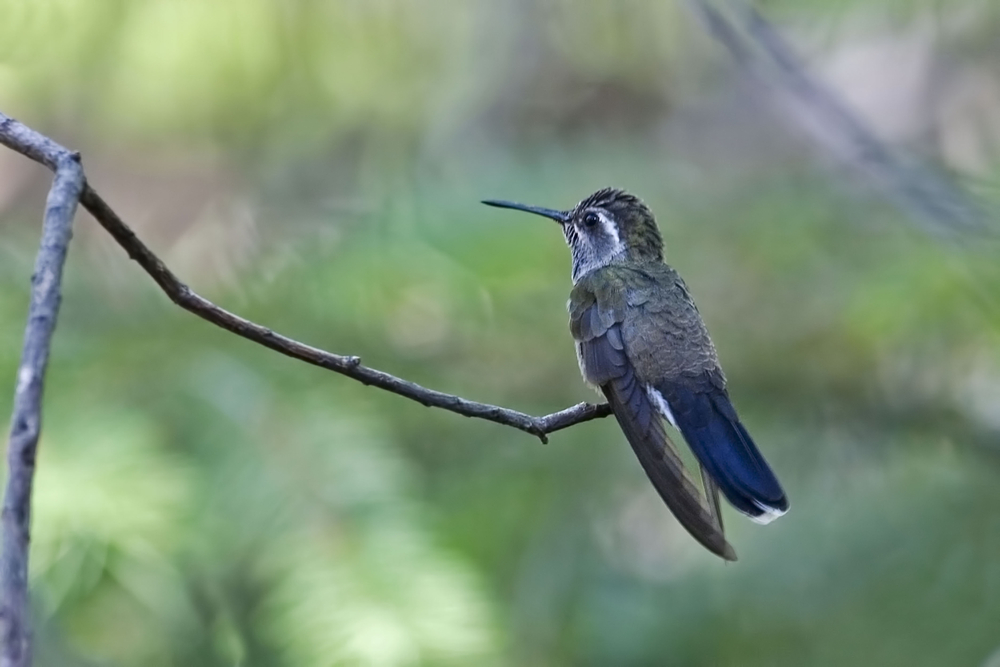
Description
The Blue-throated Hummingbird, aka Mountain-gem, is the largest in North America with an average length of 5”. The male has a sapphire-blue throat and gray body while the female is almost completely gray. The Blue-throat is almost three-times the weight of the Ruby-throated hummingbird.
Details
The Blue-throated Mountain-gem is a species of hummingbird native to Mexico and rarely migrates into the United States. When it does cross the border, it can be spotted in southwestern Texas and parts of Arizona. Both male and female Blue-throats are distinctive for their complex songs during courtship.
Buff-bellied Hummingbird
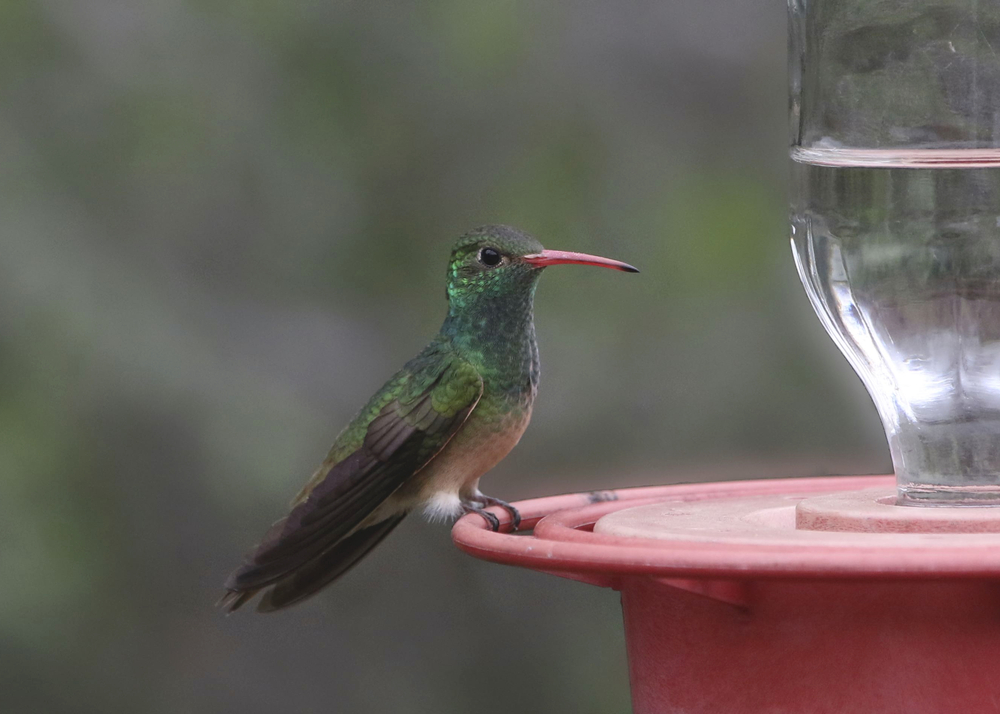
Description
Averaging a length of 4 ¼”, the Buff-bellied Hummingbird has a buff belly and a brilliant red bill. Males have a brilliant blue-green throat and breast with a brown tail. Females are similar in appearance.
Details
The Buff-bellied Hummingbird is commonly sighted in the Rio Grande Valley of Texas. It enjoys the nectar found in flowers along riverbanks, shrubs, and suburban gardens. Hummingbird feeders are also popular with this species. One of the larger hummingbirds; it is often seen chasing smaller birds away from food sources.
It is also one of the few hummingbirds that do not migrate south following the breeding season. The Buff-bellied hummingbird moves northeast into Louisiana after nesting in the Lone Star state.
Rufous Hummingbird
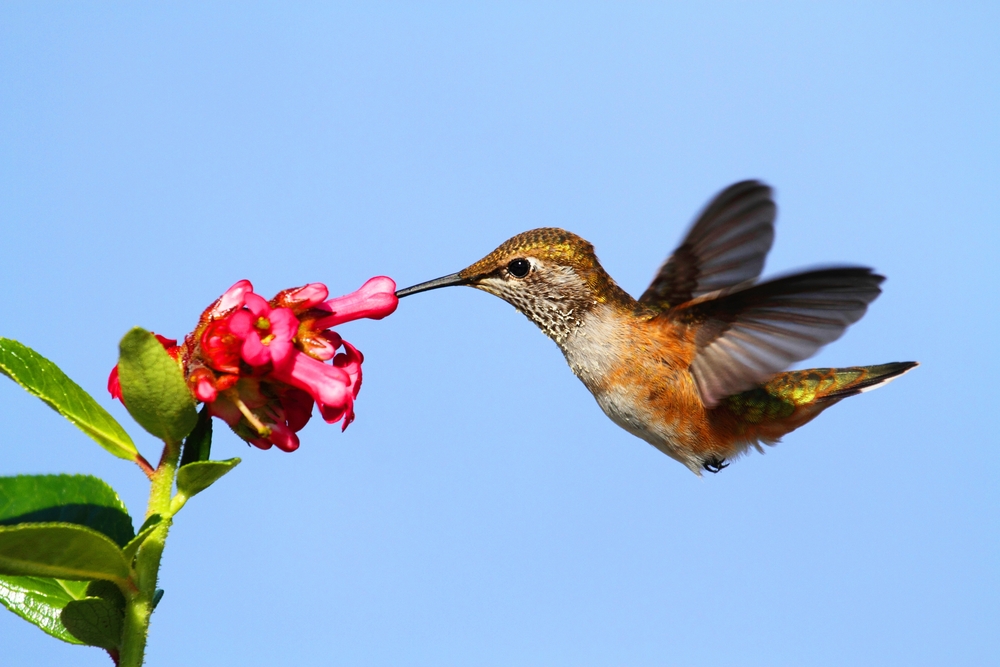
Description
The male Rufous Hummingbird is bright orange with reddish-brown wings, throat, and tail. Females do not have the same color, with a gray head and plumage with a white chest. It is one of the smaller hummingbirds with a length of 3 ½” – 3 ¾” and an average weight of a little more than 3 grams.
Details
Rufous Hummingbirds are very territorial and aggressive, defending feeders from hummingbirds much bigger than themselves. The Rufous also breeds farther north than any other hummingbird. It can be found nesting as far as the Pacific Northwest, Canada, and Alaska.
Allen’s Hummingbird

Description
Allen’s Hummingbirds have a pale orange body with a bright orange throat and green speckled wings. Unlike the Rufous, the female Allen’s is also orange with dark brown wings. They are smaller hummingbirds with an average length of 3 ½”.
Details
Although rarely seen in Texas, Allen’s hummingbirds are more commonly sighted along the California coast up to southern Oregon.
Interestingly, during the breeding season, the male and female do not stay in the same habitat. The male perches in open spaces on tree branches while the female will retreat into a thicket or wooded area to build a nest.
Black-chinned Hummingbird
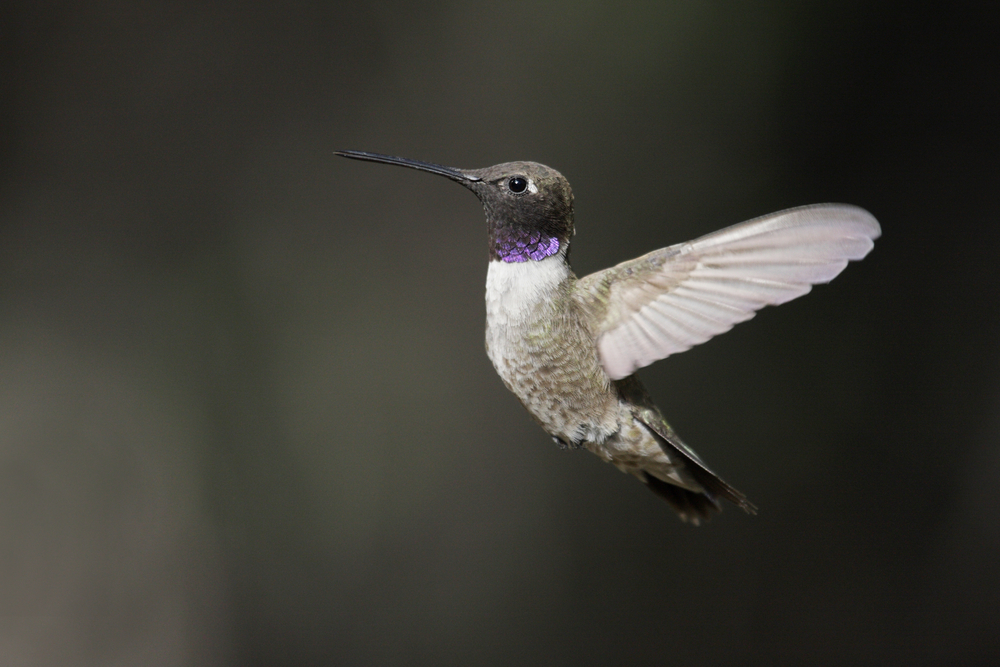
Description
The Black-chinned Hummingbird has a distinct bright purple band at the base of a black head and throat. The rest of its body is white with green speckles. Females look quite different than the male, with a white chest and green head and body, with no black chin to speak of. The average length is 3 ¾”.
Details
The Black-chinned Hummingbird is a common resident of southern Texas and can be found during the winter along the border of southern California and Mexico. Its range preference varies from deserts to mountain forests.
In cold weather, this hummingbird can consume up to three times its body weight in nectar. When nectar is not plentiful, the Black-chinned hummingbird can survive on a diet of insects.
Lucifer Hummingbird
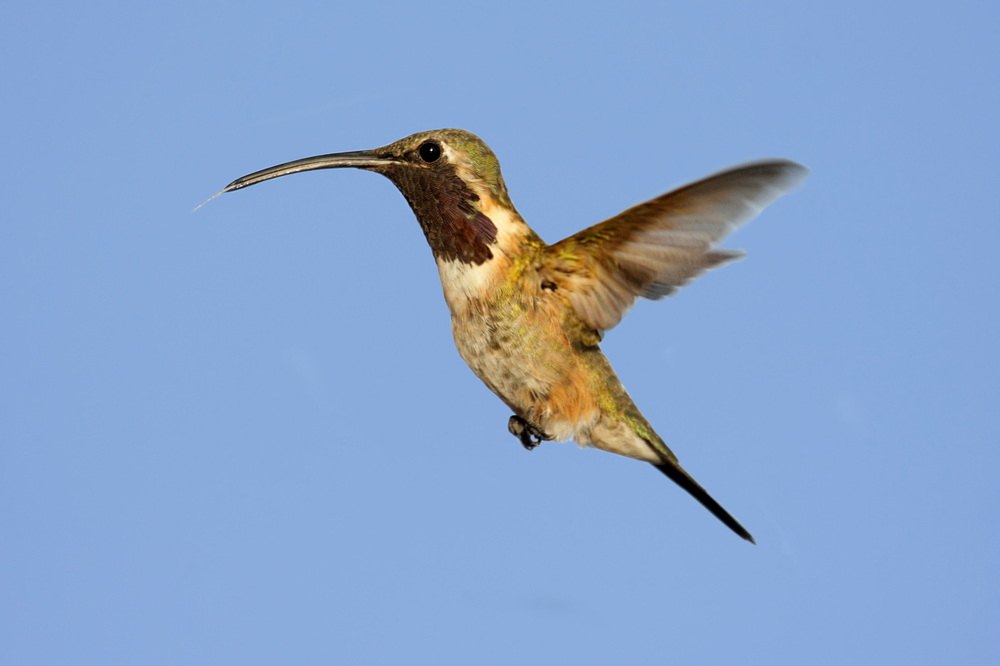
Description
The male Lucifer Hummingbird has a brilliant purple throat with green markings on the head and wings. It has a long, forked tail and a unique downward arching bill. Males average a length of around 3 ½” with the females slightly larger. Females do not have the purple throat, are usually peach and white with a rounded tail.
Details
Although rare to see the Lucifer hummingbird in Texas, it has been sighted breeding in the Chisos mountains. It is typically a resident of central Mexico. While most hummingbirds perform displays of courtship near feeding areas, the Lucifer will often court the female right at her nesting spot.
Broad-billed Hummingbird
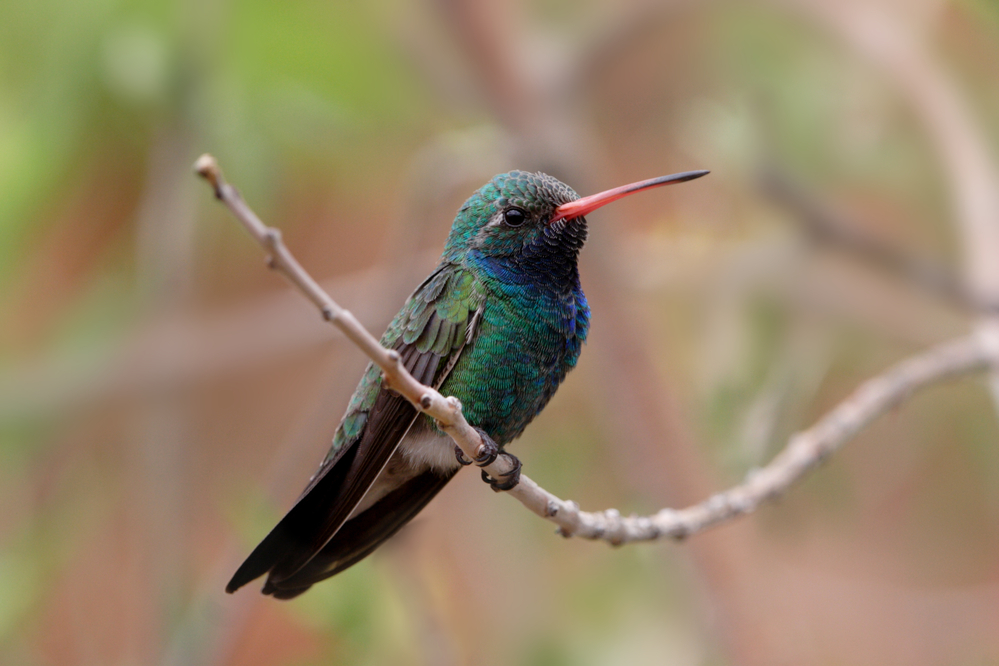
Description
One of the most attractive birds of all the species, the male Broad-billed Hummingbird is a blend of blue, green, teal, purple, and turquoise with a bright orange-red bill. The female is much more subdued in appearance, mostly gray with a light green head and body.
Details
Another hummingbird that is a rarity in Texas; prefers the canyons of Arizona. During banding operations in the state, the oldest recorded Broad-billed hummingbird was a male over nine years old.
Anna’s Hummingbird
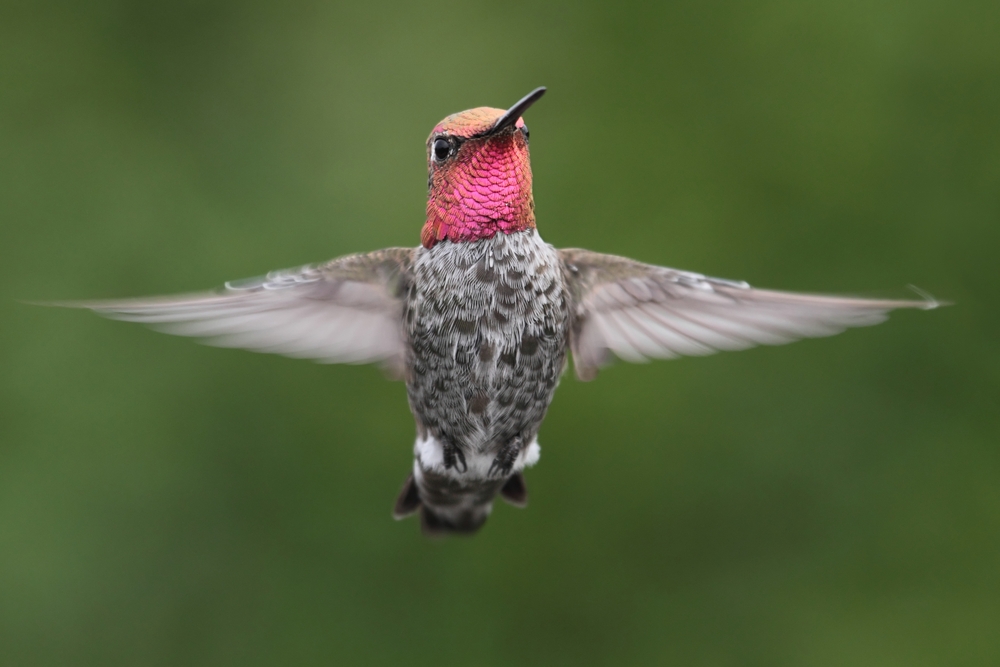
Description
Averaging a length of 4”, Anna’s Hummingbirds have emerald feathers and a fluorescent-pink head and throat patch. Females have pink flecks on the throat and are primarily emerald with a white-gray chest. This species of hummingbird has a straight, short bill and wide tail feathers.
Details
Anna’s Hummingbirds are spotted in western Texas and Arizona but tend to migrate along the Pacific Coast from Baja California up to Vancouver, British Columbia. Anna’s hummingbirds have the most northernmost range of any hummingbird, often taking up permanent residence in the winter instead of migrating south.
Green-breasted Mango

Description
One of the larger hummingbirds, the Green-breasted Mango averages 4 ¾” in length. Similar in coloration to the Broad-billed hummingbird, males have various shades of blue, purple, and emerald. Females have similar markings with a white chest. This hummingbird also has a slight downward curve to its bill.
Details
Green-breasted Mangos are primarily tropical birds residing between central Mexico and northern South America. Although considered rare in Texas, the first sighting of a Green-breasted Mango in the Lone Star state occurred in 1988. Since then, rare sightings have occurred in Corpus Christi and the lower Rio Grande Valley.
Violet-crowned Hummingbird
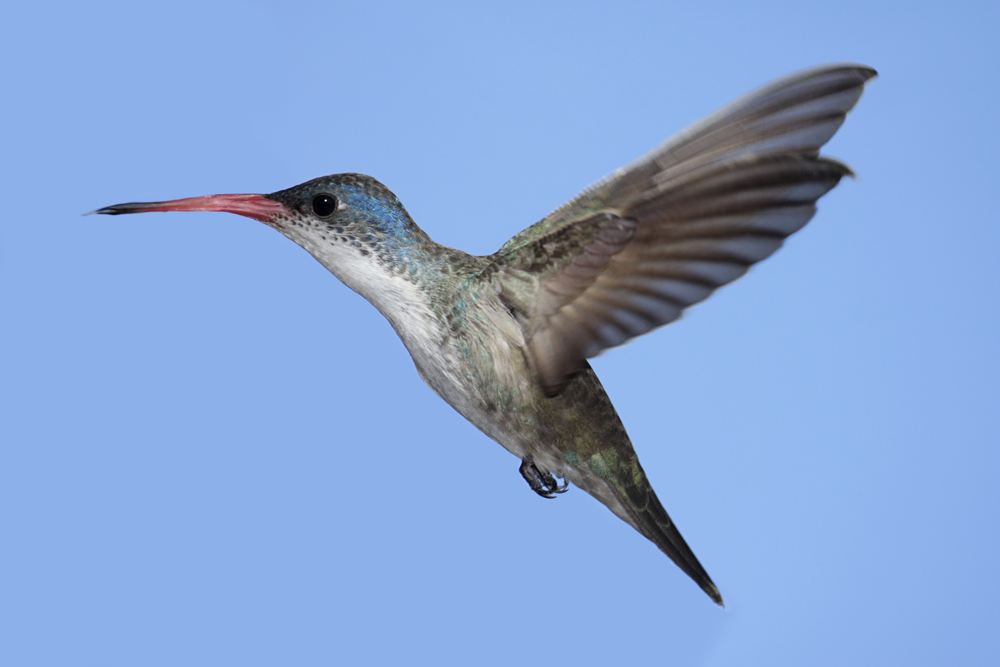
Description
Violet-crowned Hummingbirds have a very identifiable purple head, snow-white chest, chestnut wings, and back. They have a long, straight red-orange bill. Females look very much like their male counterparts. The average length is 3 ¾”.
Details
Another Mexican species that remains largely close to the equator, rare sightings of the Violet-crowned hummingbird have been made in the southeastern states. It is the only hummingbird in the U.S. that lacks a colorful gorget (throat patch). They feed on nectar and small insects and often visit hummingbird feeders.
Magnificent Hummingbird
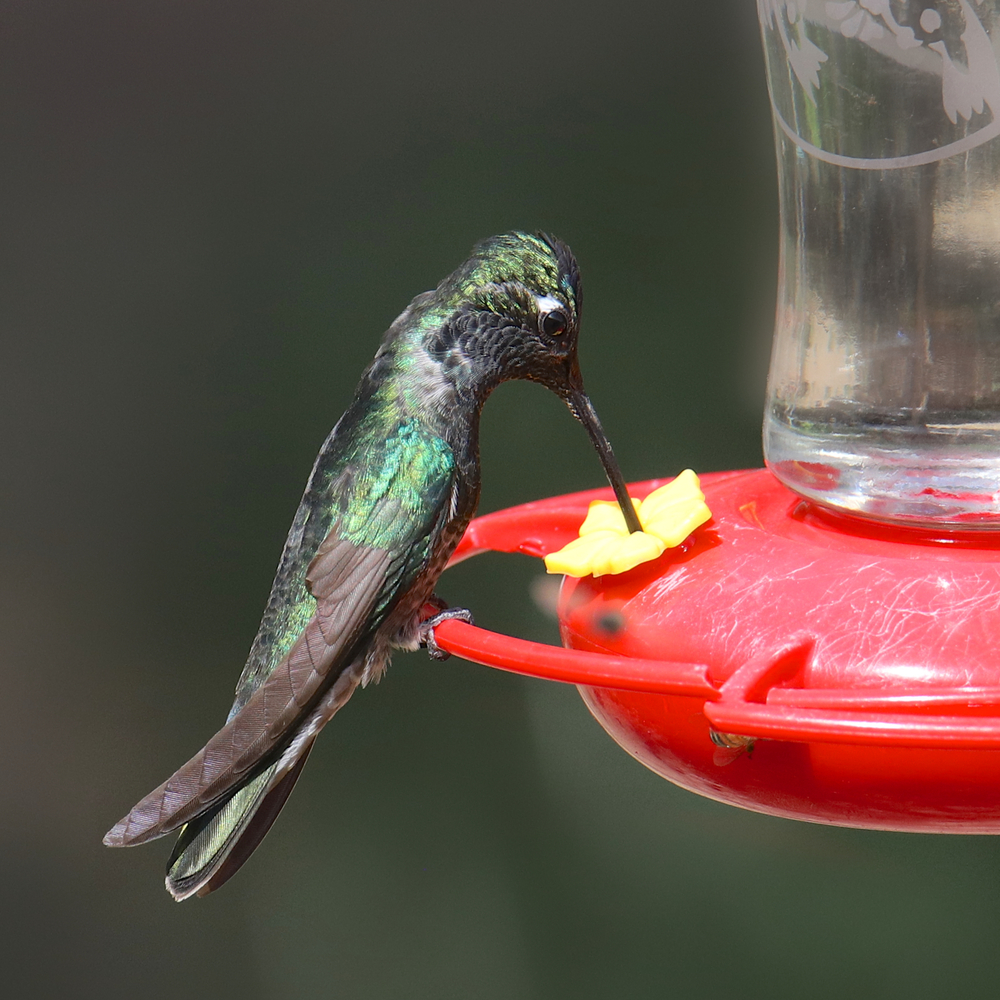
Description
The Magnificent Hummingbird is the second largest next to only the Blue-throated hummingbird. It reaches a length of 4 ½” – 5 ½” with an average weight of 7-8 grams and a wingspan of 7”.
The male Magnificent has a purple crown and bright blue-green throat patch. The rest of the body is bronze with a splash of emerald on the wings. The female has similar bronze-green plumage but a gray underbelly. Both sexes have a distinctive white stripe behind the eyes.
Details
Formerly named Rivoli’s hummingbirds, the Magnificent hummingbird is occasionally found in western Texas but more commonly in Arizona and New Mexico. They like to nest in mountainous regions and range from Mexico to Costa Rica and Panama.
In addition to nectar, the Magnificent will feed on small spiders and insects, either snatched in midair or taken from spider webs.
Hummingbirds in Texas
Hummingbirds make Texas one of the best states in the country to go birding. Every spring, hummingbirds fly north and pass through Texas to breeding grounds across the United States. They can be seen again in the Lone Star state every fall as they migrate back to Mexico.
With more than two dozen types of hummingbirds identified in the southern US, Texas is an ideal destination for bird-watchers everywhere.
